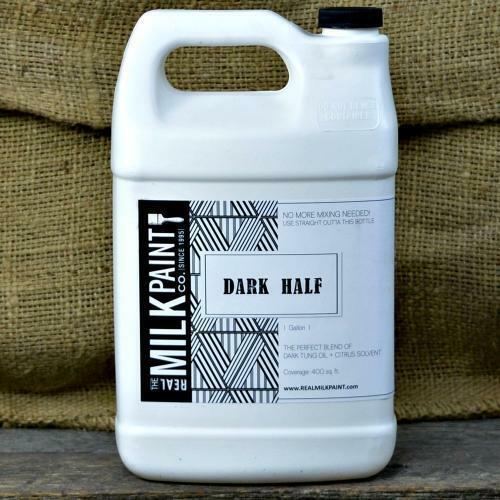-40%
Real Milk Paint Dark Half - Gallon
$ 39.59
- Description
- Size Guide
Description
Product DescriptionINSTANTLY ADD DEPTH TO YOUR GRAIN FOR AN AGED-ANTIQUE FINISH
This the same Dark Raw Tung oil but we have mixed the Citrus Solvent in for you! Mixed with natural Citrus Solvent and a naturally occurring resinous hydrocarbon for color. The resin is non-carcinogenic and does not contain any PCB’s. Dark Half Tung Oil and Citrus Solvent by The Real Milk Paint Company is water and alkali resistant. It resists marring, penetrates well, elastic and unlikely to check. Dark Half penetrates deep into the wood pores filling them up, consolidates the wood surface and builds a dark matte wood finish. It should be kept in an airtight container with minimum air space.
Features
Naturally polymerizing wood finish
Cures by oxidation not evaporation
Does not form a glossy finish no matter the number of coats
Form a flexible water proof finish
Resists abrasion and acids
Does not blister and peel (properly applied)
Does not mold like linseed oil
Long shelf life
Does not darken with time like linseed oil
Concentrated (thin one to one, doubles the coverage)
Combined with “Citrus Solvent” makes an all-natural wood finish
FDA approved for food contact
Does not go rancid
Coverage
8 oz. covers 25 sq. feet
16 oz. covers 50 sq. feet
32 oz. covers 100 sq. feet
Gallon covers 400 sq. feet one coat
This is coverage for the oil only and not diluted with Citrus Solvent.
History
Pure Tung Oil is a finishing product that provides a tough, flexible and highly water-resistant coating for a great wood finish when staining wood. It is classed as a drying oil along with linseed, poppy seed, safflower seed, walnut, soybean, oiticica and a few other oils. Although it is relatively new to the Western world, tung oil has been known for centuries to the Chinese, and until this century, China was the main source for the oil. It comes from the seed of the tung trees, Aleurites fordii and Aleurites montana, deciduous trees that are very susceptible to frost damage. This vulnerability has restricted the cultivation of the tung trees to China and South America. Tung oil received wide application in China: in the building trades as a treatment for both stone and wooden structures; in marine trades as a preservative and water repellant on wooden boats.
It is said to have been introduced to the West by Marco Polo. From the 13th to the 19th century, tung oil had only limited use in the West. In the 19th century it was adopted by the paint companies to become a major component in paints and varnishes. More recently, tung oil has gained favor over linseed oil for furniture finishing because it is faster drying and does not darken as much with age.







